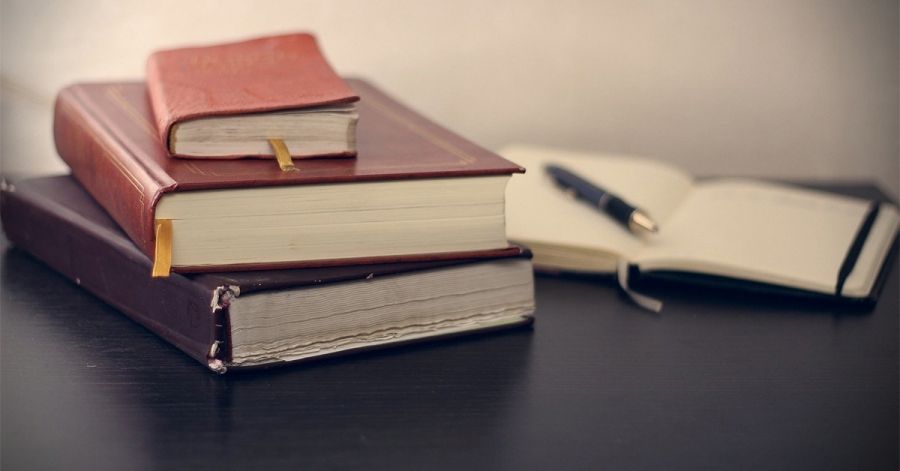
- Free Article: No
- Custom Article Title: Belated recognition of Australian prose poetry
- Review Article: No
- Online Only: No
- Custom Highlight Text:
Until recently, Australian prose poetry hasn’t attracted much attention – we’re not sure why. Having written prose poetry for years, we’re both fascinated by the form, which can be loosely defined as poems written in paragraphs and sentences rather than in stanzas and lines.
- Grid Image (300px * 250px):

The situation was markedly different in the United States and the United Kingdom where a variety of anthologies of prose poetry have been published, including Peter Johnson’s A Cast-Iron Aeroplane That Can Actually Fly (2019), Anne Caldwell and Oz Hardwick’s The Valley Press Anthology of Prose Poetry (2019), Brian Clements and Jamey Dunham’s An Introduction to the Prose Poem (2009), David Lehman’s Great American Prose Poems from Poe to Present (2003), Peter Johnson’s Best of the Prose Poem (2000), and Stuart Friebert’s and David Young’s Models of the Universe (1995).
Furthermore, when a significant international prose poetry anthology was released in 2018 – Jeremy Noel-Tod’s The Penguin Book of the Prose Poem: From Baudelaire to Anne Carson – only three Australian prose poems were included in the selection of 200 works. Australian prose poetry was simply not very visible.
It was important to take action to rectify this situation, and so we proposed to Melbourne University Press that we publish an anthology of about 160 Australian prose poems, written and published over the past fifty years or so. We suggested this because the contemporary prose poetry form is important. It was inaugurated in Paris in 1869 with the posthumous publication of Charles Baudelaire’s ground-breaking prose poetry collection, Paris Spleen, and was rapidly developed by other major nineteenth-century French prose poets, including Arthur Rimbaud and Stéphane Mallarmé.
 Charles Baudelaire by Étienne Carjat, 1863 (British Library/Wikimedia Commons)
Charles Baudelaire by Étienne Carjat, 1863 (British Library/Wikimedia Commons)
Since then, prose poetry has become a vehicle for writers all over the world to address urban life in telling ways and to make works that combine truncated narratives with a genuinely poetic mode of expression. Prose poetry, even more than contemporary free verse, enables the intense expression of many things at once: the multivalent, the intimate, the fragmentary, the ordinary.
Prose poetry is able to encompass diverse expressions of the crammed and sometimes clashing nature of contemporary experience. It is well suited to breaking down barriers between high art and more familiar forms of writing because, in its use of sentences and paragraphs, it looks like approachable prose fiction or non-fiction, rather than poetry. Prose poetry signals that, since the rise of modernism, the ‘prosaic’ and the ‘poetic’ are frequently bound together.
Unlike the French tradition, Australian prose poetry only gathered momentum in the 1970s, partly as a result of the rise of the counterculture and the spread of American culture and values. The influence of prose poems written in Latin America and Europe since the 1950s also grew. Gradually, Australian literature became more diverse and adventurous.
Chris Wallace-Crabbe included a prose poetry suite, ‘Going to Cythera’, in his 1971 collection Where the Wind Came. In 1975, Rudi Krausmann’s From Another Shore was the first full collection by an Australian writer to consistently employ prose-poetical techniques. Andrew Taylor’s volume of prose poetry, Parabolas (1976), is considered the first book of prose poetry published in Australia.
As the twentieth century progressed, a significant number of Australian writers produced accomplished prose poems, including Pam Brown, Gary Catalano, joanne burns, and Ania Walwicz. Indigenous writers such as Ali Cobby Eckermann and Samuel Wagan Watson have increasingly taken up the form, partly because it is suitable for registering experiences of cultural disruption and disjuncture.
The Anthology of Australian Prose Poetry includes selections from all of these writers, along with many other authors and works. A rich and diverse miscellany of antipodean prose poetry is finally assembled in one place, with the potential to become a ready reference for Australian prose poets everywhere. The anthology also provides general readers with access to otherwise hard-to-obtain works and a way into new understandings of prose poetry more generally.
We hope this publication will begin a process where prose poetry takes its rightful place in Australian literary culture, and that it will lead readers to further explorations of a significant Australian literary tradition that is only now starting to be properly recognised.
Paul Hetherington and Cassandra Atherton’s The Anthology of Australian Prose Poetry (Melbourne University Press) will be reviewed in the next issue.



Comments powered by CComment